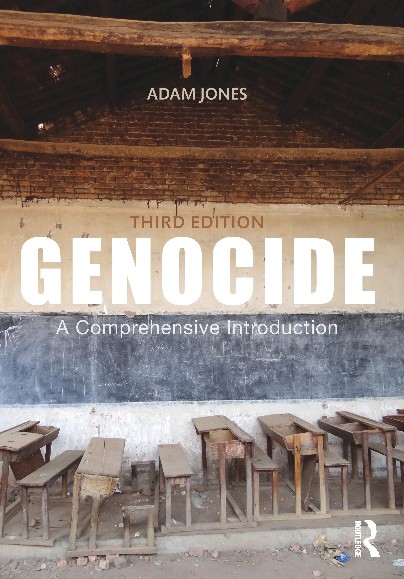Mao's Great Famine: The History of China's Most Devastating Catastrophe (1958-62) (book review)
By John Gray
New Statesman, September 20, 2010
"When François Mitterrand visited China in 1961, Mao Zedong mocked reports of famine in the country. There was no famine, he said, only 'a period of scarcity,' an assertion that Mitterand -- who described Mao as 'a great scholar known in the entire world for the diversity of his genius' -- was happy to accept. Returning to France after his three-week tour, Mitterrand had no doubts about his account of events: 'I repeat in order to be clearly understood -- there is no famine in China.' Western politicians of the right shared the French Socialist leader's view. After touring China in late 1960, the Conservative MP for Chester, John Temple, reported that communism was working and that the country was making 'great progress.' At the time these western dignitaries were making their escorted tours through China, it was in the grip of the largest famine in history, a man-made catastrophe in which at least 45 million people were starved, beaten, tortured or worked to death. Though Mao's Great Leap Forward was celebrated in the west as a major advance, the reality was captured by the name villagers gave to the vast irrigation schemes on which they were forced to labour -- they called them 'the killing fields.' At least 2.5 million of the famine's victims died violently. Assaults against women were pervasive, including rape by party cadres and beatings for women who miscarried while being forced to work during the last stage of pregnancy. In some collectives, people were divided into groups and food distributed according to capacity for work -- a type of 'performance feeding' similar to that practised in the Nazi labour camps, with similar results (the old and infirm soon perished). In order to punish their families, those who died of beatings in rural communes might be left unburied; in some cases, their bodies were rendered into compost.
Human flesh was traded on the black market, sometimes mixed with dog meat. Once full of sound, the countryside became a place of silence, with no birds left in the trees, which had been stripped of their bark and leaves. Livestock was confiscated, often only to die of neglect. Children too weak even to cry were left to die in empty fields. Suicide was epidemic; between one and three million of those who perished during the Great Leap Forward took their own lives. Uncounted others vanished after being denied food in the communal canteens. ... Using first-hand reports from party archives that have opened in the past few years, Mao's Great Famine is a masterpiece of historical investigation into one of the world's greatest crimes. Writing throughout in a sober and restrained style that only highlights the horror of the events it records, Dikötter shows in rigorous detail how responsibility for the disaster must be traced back directly to Mao. It was Mao who bullied his fellow communists into the Great Leap Forward, ordering purges of over three million 'rightist elements' accused of questioning his policies. As late as the summer of 1959, a change of direction could have limited the casualties of the famine to millions. But Mao pressed on, and tens of millions died. Uncovering the magnitude of this terrible crime, Dikötter has produced one of the few books that anyone who wants to understand the 20th century simply must read. [...]"
Monday, September 20, 2010
Subscribe to:
Post Comments (Atom)














Dikotter is a right wing historian, bankrolled by the Chiang Chingkuo foundation. Former president of Taiwan Chiang Chingkuo of course is the son of Chiang Kaishek.
ReplyDeleteDikotter thinks that the Opium war was a favour done to the Chinese by the British. And pre-revolutionary China was just a paradise (with its life expectancy of 32).
Of course Dikotter's work must be judged on its merits. But look at the cover his book.
Then look at this picture taken from Life magazine of a real Chinese famine in 1946 - under the Nationalists:
http://www.life.com/image/50863592
It is exactly the same picture.
It makes me wonder exactly how honest he was in interpreting those mainland Chinese archives he purportedly had access to.
The eminent Indian economist Amartya Sen, has estimated that “compared with China’s rapid increase in life expectancy in the Mao era, the capitalist experiment in India could be said to have caused an extra 4 million deaths a year since India’s independence…India seems to manage to fill its cupboard with more skeletons every eight years than China put there in its years of shame, 1958-61’”
ReplyDeleteThat’s about 240 million excess deaths caused by Indian ‘democracy.’
Dikotter talks about this mass starvation - yet there is not one photograph from the period showing this to be the case. And if the peasants were brutalised in the manner and in extent that Dikotter claims then it is absolutely impossible that most Chinese would be unaware of this and require this 'detective' work to 'prove' this to be the case. The fact is the very areas where Mao is most popular is the countryside - and especially among the older generation who lived through the 1950s and 1960s.
ReplyDeleteYes, there was incredible hardship and there were excess deaths - but if the brutalities Dikotter details were representative of the overall situation, I think the Chinese people would have collective memories of them, and would hate Mao and the Communist Party. And these would be passed down to their children. But there are none - at least among the my many friends and relatives - many who lived through the period.